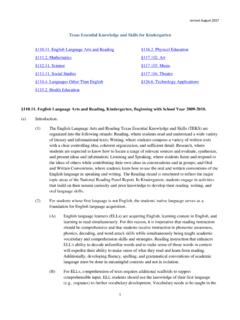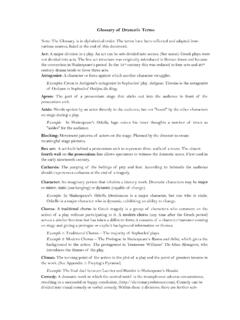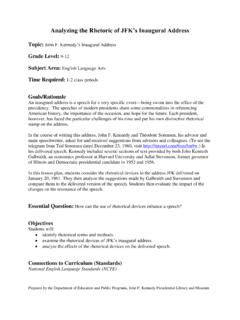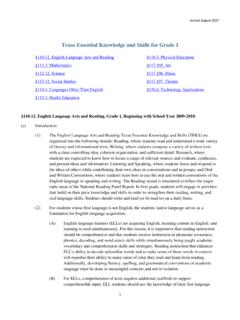Transcription of Conspiracy Theory Handbook - Climate Change …
1 TheConspiracyTheory HandbookStephan LewandowskyJohn Cook2 The Conspiracy Theory HandbookWritten by: Stephan Lewandowsky, School of Psychological Science, University of Bristol, School of Psychological Science, University of Western Australia, and CSIRO Oceans and Atmosphere, Hobart, Tasmania, AustraliaJohn Cook, Center for Climate Change Communication, George Mason University First published in March 2020. For more information, visit design: Wendy Cook With thanks to the COST Action COMPACT (Comparative Analysis of Conspiracy Theories). Cite as: Lewandowsky, S., & Cook, J. (2020). The Conspiracy Theory Handbook . Available at Conspiracy Theory Handbook3 Distinguishing between real conspiracies and Conspiracy theoriesConventional vs. Conspiratorial ThinkingActual conspiracies do exist but they are rarely discovered through the methods of Conspiracy theorists. Rather, real conspiracies get discovered through conventional thinking healthy skepticism of official accounts while carefully considering available evidence and being committed to internal In contrast, conspiratorial thinking is characterized by being hyperskeptical of all information that does not fit the Theory , over-interpreting evidence that supports a preferred Theory , and ThinkingConspiratorial ThinkingHealthy skepticismOverriding suspicionResponsive to EvidenceOver-interpreting evidenceStrives for CoherenceContradictoryActual conspiracyImagined conspiracyReal conspiracies do exist.
2 Volkswagen conspired to cheat emissions tests for their diesel engines. The National Security Agency secretly spied on civilian internet users. The tobacco industry deceived the public about the harmful health effects of smoking. We know about these conspiracies through internal industry documents, government investigations, or theories, by contrast, tend to persist for a long time even when there is no decisive evidence for them. Those Conspiracy theories are based on a variety of thinking patterns that are known to be unreliable tools for tracking reality. Typically, Conspiracy theories are not supported by evidence that withstands scrutiny but this doesn t stop them from blossoming. For example, the widespread belief that the 9/11 terrorist attacks were an inside job has persisted for many years after the Decades after the fact, a vast majority of Americans believe that the government covered up the truth about the JFK theories damage society in a number of ways.
3 For example, exposure to Conspiracy theories decreases people s intentions to engage in politics or to reduce their carbon In order to minimise these harmful effects, The Conspiracy Theory Handbook helps you understand why Conspiracy theories are so popular, explains how to identify the traits of conspiratorial thinking, and lists effective debunking strategies. Typically, Conspiracy theories are not supported by evidence that withstands scrutiny but this doesn t stop them from Conspiracy Theory HandbookWhy are Conspiracy theories popular?A number of factors can contribute to people believing and sharing Conspiracy of powerlessnessPeople who feel powerless or vulnerable are more likely to endorse and spread Conspiracy This is seen in online forums where people s perceived level of threat is strongly linked to proposing Conspiracy with threatsConspiracy theories allow people to cope with threatening events by focusing blame on a set of People find it difficult to accept that big events ( , the death of Princess Diana) can have an ordinary cause (driving while intoxicated).
4 A Conspiracy Theory satisfies the need for a big event to have a big cause, such as a Conspiracy involving MI5 to assassinate Princess unlikely eventsFor the same reason, people tend to propose conspiratorial explanations for events that are highly Conspiracy theories act as a coping mechanism to help people handle mainstream politicsConspiracy theories are used to dispute mainstream political Conspiratorial groups often use such narratives to claim minority who feel powerless or vulnerable are more likely to endorse and spread Conspiracy media amplifies Conspiracy theorizingSocial media has created a world in which any individual can potentially reach as many people as mainstream The lack of traditional gate-keepers is one reason why misinformation spreads farther and faster online than true information13, often propelled by fake accounts or bots 14. Likewise, consumers of Conspiracy theories have been found to be more prone to like and share conspiracist posts on A recent analysis of tweets about the Zika virus found that the number of propagators of Conspiracy theories was more than double that of debunkers of those Conspiracy Theory Handbook5 Response to Global Warmingby Climate Change deniersPercentage of Respondents100403020It sNaturalFlatDenialDoubtScienceHypeConspi racyTheorySmith & Leiserowitz, 2012 How Conspiracy theories do damageMere exposure to a Conspiracy Theory may have adverse consequences, even among people who don t subscribe to the Conspiracy , 17, 18, 19, 20, 21 To illustrate, exposure to a Conspiracy Theory about the political manipulation of unemployment data reduced trust in government services and institutions, including those unconnected to the conspiratorial allegations.
5 Such as local schools or the Food and Drug denial and conspiratorial thinkingTactical Conspiracy theoriesConspiracy theories aren t always the result of genuinely held false beliefs. They can be intentionally constructed or amplified for strategic, political reasons. For example, there is evidence that the Russian government recently contributed to the spread of various political Conspiracy theories in the , 23 Conspiracy theories may be deployed as a rhetorical tool to escape inconvenient conclusions. The rhetoric of Climate denial is filled with incoherence, such as the simultaneous claims that temperature cannot be measured accurately but global temperatures have Incoherence is one attribute of conspiratorial thinking, but it does not follow that Climate denial is irrational on the contrary, denialist rhetoric is an effective political strategy to delay Climate action by undermining people s perception of the strength of scientific confirmation.
6 People selectively appeal to a Conspiracy among scientists to explain away a scientific consensus when their political ideology compels them to do so but not when the scientific consensus is of no relevance to their the scientific consensus that humans are causing global warming is often the result of conspiratorial thinking rather than a careful weighing of scientific When Climate deniers are presented with information about Climate Change , their most common response is conspiratorial in However, Climate denial isn t just associated with Climate -themed Conspiracy theories rather, people who deny Climate science are more likely to endorse Conspiracy theories in other topics as theories may be deployed as a rhetorical tool to escape inconvenient Conspiracy Theory HandbookCONSPIR: The seven traits of conspiratorial thinkingThere are seven traits of conspiratorial thinking 29, summarized (and more easily remembered) with the acronym CONSPIR:NefariousIntentSomething Must Be WrongContradictoryOverridingsuspicionPer secutedVictimImmune toEvidenceRe-interpretingRandomnessNSCOP IRC ontradictory Conspiracy theorists can simultaneously believe in ideas that are mutually contradictory.
7 For example, believing the Theory that Princess Diana was murdered but also believing that she faked her own This is because the theorists commitment to disbelieving the official account is so absolute, it doesn t matter if their belief system is suspicionConspiratorial thinking involves a nihilistic degree of skepticism towards the official This extreme degree of suspicion prevents belief in anything that doesn t fit into the Conspiracy intentThe motivations behind any presumed Conspiracy are invariably assumed to be Conspiracy theories never propose that the presumed conspirators have benign Conspiracy Theory Handbook7 The self-sealing nature of Conspiracy theories means that any evidence disproving a Theory may be interpreted as further evidence for the Conspiracy . This means that communication efforts need to clearly differentiate between different target audiences. If Conspiracy theorists re-interpret evidence to mean the opposite, then they require a different strategy to those who value evidence.
8 The following pages look first at communication strategies for the general public, then for Conspiracy theorists must be wrongAlthough Conspiracy theorists may occasionally abandon specific ideas when they become untenable, those revisions don t Change their overall conclusion that something must be wrong and the official account is based on , 30Re-interpreting randomnessThe overriding suspicion found in conspiratorial thinking frequently results in the belief that nothing occurs by Small random events, such as intact windows in the Pentagon after the 9/11 attacks, are re-interpreted as being caused by the Conspiracy (because if an airliner had hit the Pentagon, then all windows would have shattered 35) and are woven into a broader, interconnected to evidenceConspiracy theories are inherently self-sealing evidence that counters a Theory is re-interpreted as originating from the , 32, 33 This reflects the belief that the stronger the evidence against a Conspiracy ( , the FBI exonerating a politician from allegations of misusing a personal email server), the more the conspirators must want people to believe their version of events ( , the FBI was part of the Conspiracy to protect that politician).
9 Persecuted victimConspiracy theorists perceive and present themselves as the victim of organized At the same time, they see themselves as brave antagonists taking on the villainous conspirators. Conspiratorial thinking involves a self-perception of simultaneously being a victim and a Conspiracy Theory HandbookProtecting the public against Conspiracy theoriesReducing the spread of Conspiracy theoriesAn ounce of prevention is worth a pound of cure. Efforts should therefore focus on protecting the public from exposure to those theories, by inhibiting or slowing the spread of Conspiracy theories. For example, sharing of conspiratorial Climate -denial posts on Facebook was reduced by a simple intervention that encouraged people to ask four questions about material before sharing it: 36Do I recognize the news organization that posted the story?Does the information in the post seem believable?Is the post written in a style that I expect from a professional news organization?
10 Is the post politically motivated?When efforts to contain the spread of a Conspiracy fail, communicators must resort to strategies that reduce the impact of Conspiracy people are preemptively made aware that they might be misled, they can develop resilience to conspiratorial messages. This process is known as inoculation or prebunking. There are two elements to an inoculation: an explicit warning of an impending threat of being misled, and refutation of the misinformation s arguments. Prebunkings of anti-vaccination Conspiracy theories have been found to be more effective than and logic-based inoculations have both been successful in prebunking a 9/11 This indicates some promise in logic-based prebunking, given the seven tell-tale traits of conspiratorial thinking (remember CONSPIR?). If people are made aware of the flawed reasoning found in Conspiracy theories, they may become less vulnerable to such people are made aware of the flawed reasoning found in Conspiracy theories, they may become less vulnerable to such Conspiracy Theory Handbook9 DebunkingThere are various ways to debunk Conspiracy theories, some of which have been shown to be effective with people who are unlikely to endorse Conspiracy theories, such as university students or the general debunkingsFact-based debunkings show that the Conspiracy Theory is false by communicating accurate information.






